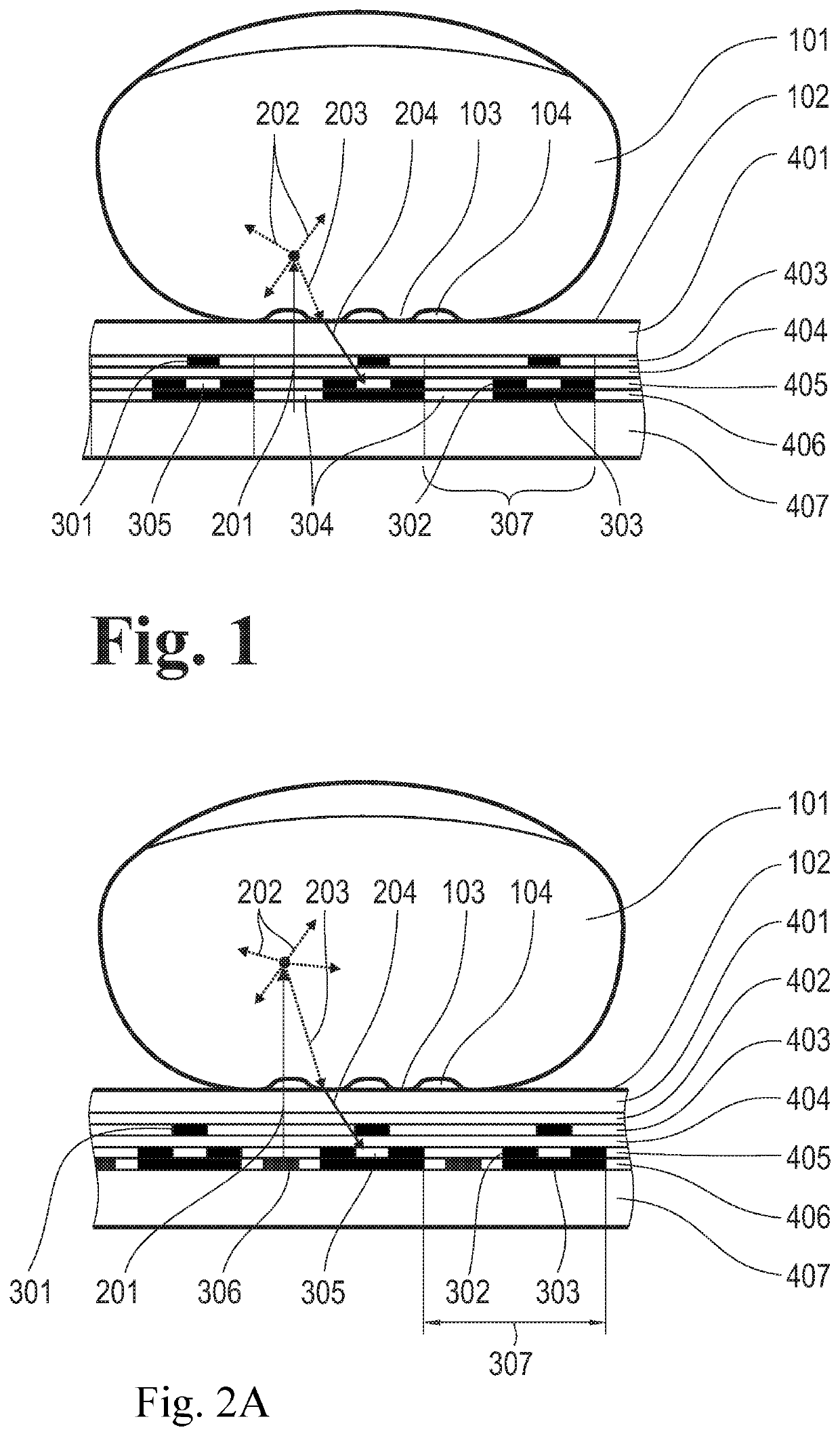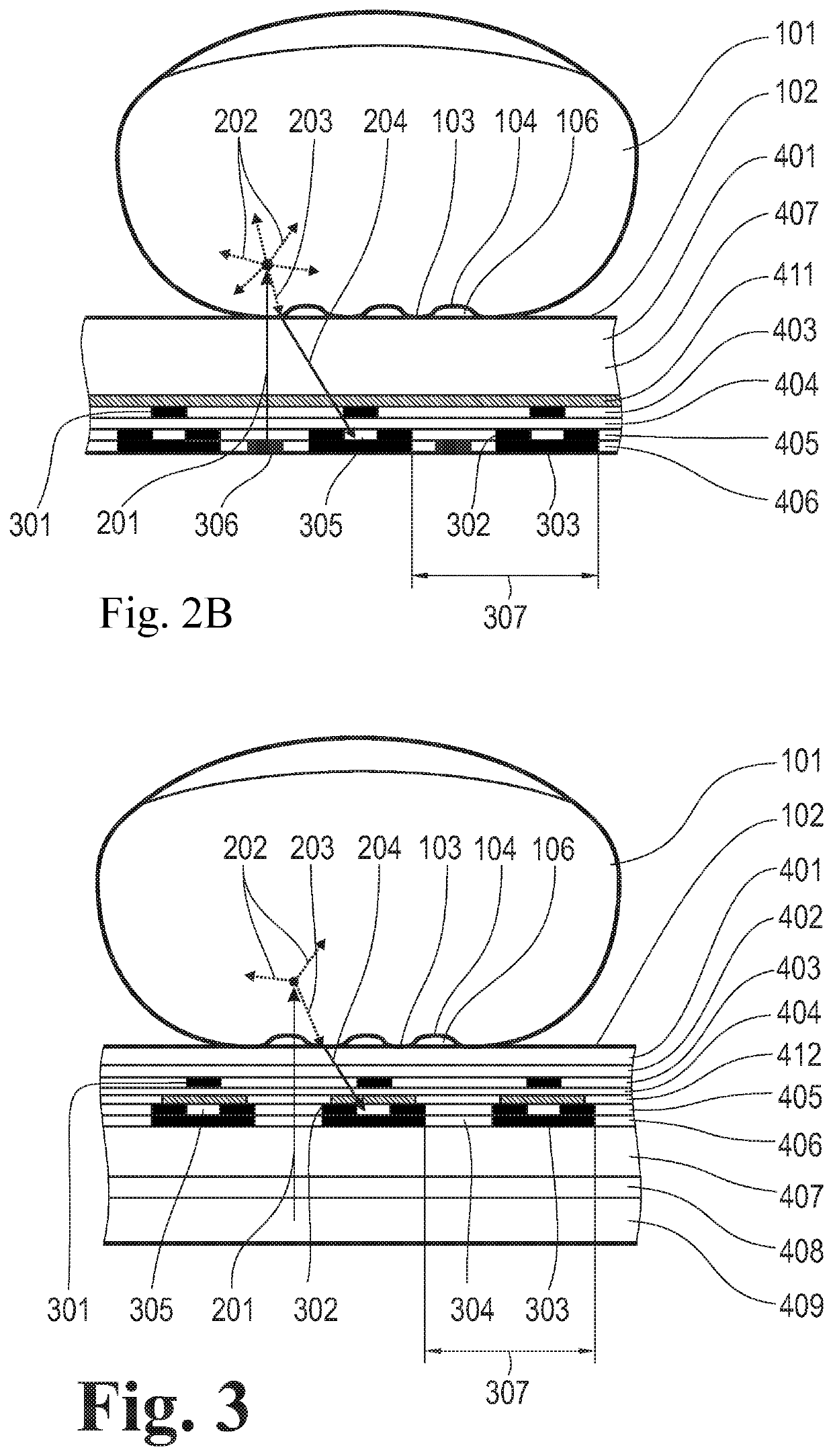Apparatus for the direct optical capture of skin prints and documents
a technology of skin prints and documents, applied in the field of apparatuses for direct optical capture of securityrelevant objects, can solve the problems of inability to generate contrast values in the range of conventional prism-based devices, the size and weight of the bulky prism which is used, and the inability to adjust the overall optical system, so as to improve the brightness difference, high contrast, and the effect of improving the brightness
- Summary
- Abstract
- Description
- Claims
- Application Information
AI Technical Summary
Benefits of technology
Problems solved by technology
Method used
Image
Examples
Embodiment Construction
[0054]The layer sequence of an apparatus for direct optical capture of security-relevant objects (hereinafter, for the sake of brevity, direct optical sensor) is shown schematically in a sectional view in FIG. 1. Security-relevant objects are skin areas such as, for example, the imprint of a finger 101, handprints or footprints, and documents 105 (only shown in FIGS. 5, 6 and 10) for identifying persons such as, e.g., identification card, passport, driver's license, credit card or visiting card.
[0055]FIG. 1 schematically shows a finger 101 with a plurality of skin ridges 103 and skin valleys 104 which is placed on the placement surface 102 of the direct optical sensor. The placement surface 102 is usually formed by the outer surface of a resistant transparent cover layer 401 on which more than one finger 101 can also be placed simultaneously. FIG. 1 schematically shows the sensor structure for the optical capture of the placed finger 101 by reference to three pixels 307 which are fo...
PUM
| Property | Measurement | Unit |
|---|---|---|
| distance | aaaaa | aaaaa |
| acceptance angle | aaaaa | aaaaa |
| distance | aaaaa | aaaaa |
Abstract
Description
Claims
Application Information
 Login to View More
Login to View More - R&D
- Intellectual Property
- Life Sciences
- Materials
- Tech Scout
- Unparalleled Data Quality
- Higher Quality Content
- 60% Fewer Hallucinations
Browse by: Latest US Patents, China's latest patents, Technical Efficacy Thesaurus, Application Domain, Technology Topic, Popular Technical Reports.
© 2025 PatSnap. All rights reserved.Legal|Privacy policy|Modern Slavery Act Transparency Statement|Sitemap|About US| Contact US: help@patsnap.com



